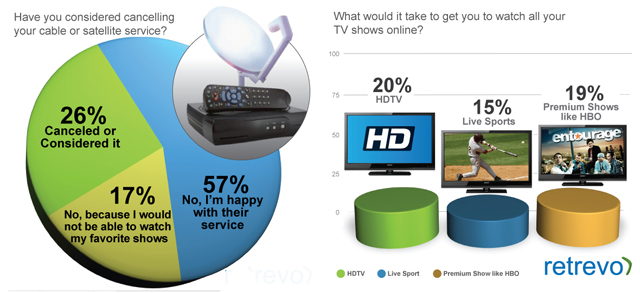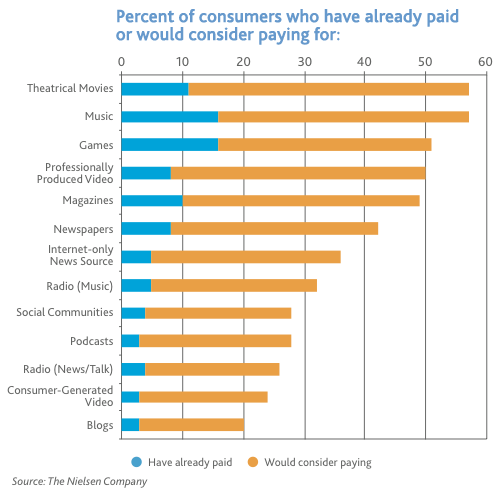 The 2009-2010 economic downturn has without a doubt impacted virtually every sector of the entertainment marketplace, it has also accelerated and intensified the digital migration among both providers and consumers of content. Direct digital distribution is beginning to surface as a major way of providing movies to audiences online. According to the Houston Chronicle:
The 2009-2010 economic downturn has without a doubt impacted virtually every sector of the entertainment marketplace, it has also accelerated and intensified the digital migration among both providers and consumers of content. Direct digital distribution is beginning to surface as a major way of providing movies to audiences online. According to the Houston Chronicle:
“a survey conducted by consumer electronics shopping site Retrevo, 64 percent of Americans watch at least some of their television online. Twenty-three percent of respondents under 25 said they watch most of their TV online.”

Online video viewing is more ubiquitous than ever. Consider the results from Nielsen’s Three Screen Report:
“138 million people watching video Internet spent on average three hours, 22 minutes during the month doing so”
As prices for devices like the iPhone or the new iPad drop, as online video quality improves, and more premium content becomes available on the internet, both broadband and mobile video will continue to grow.
But what about the number of consumers who actually paid for the online video content? The convergence of the television and the computer makes sense, but will online-viewers be willing to pay for content that they originally watched for free?

As the computer-using and wireless hand-held segment of the entertainment consuming population continues to increase, as digital cable lines, DSL, wireless, satellite, and other systems continue to converge, and as delivery technology continues to improve, one can expect that delivery of motion pictures online or wirelessly will rapidly expand over the next few years.
The digital vs. TV discourse will continue to accelerate. While the economy will have (hopefully) recovered by 2011, the broadcast networks will soon be fighting for every dollar side by side YouTube, Hulu, the digital video networks, and the rest of the video providers out there knocking on the door.
 Could it be the end of the long held relationship between marketers and entertainment producers? Advertisers are shifting from television to digital media. An increasing number of marketers are using social and digital media to reach certain demographics and raise brand awareness.
Could it be the end of the long held relationship between marketers and entertainment producers? Advertisers are shifting from television to digital media. An increasing number of marketers are using social and digital media to reach certain demographics and raise brand awareness.
 It will be interesting to see how product placement companies react to brands’ growing interests in the new opportunities and low-cost options provided by digital media. As
It will be interesting to see how product placement companies react to brands’ growing interests in the new opportunities and low-cost options provided by digital media. As 
